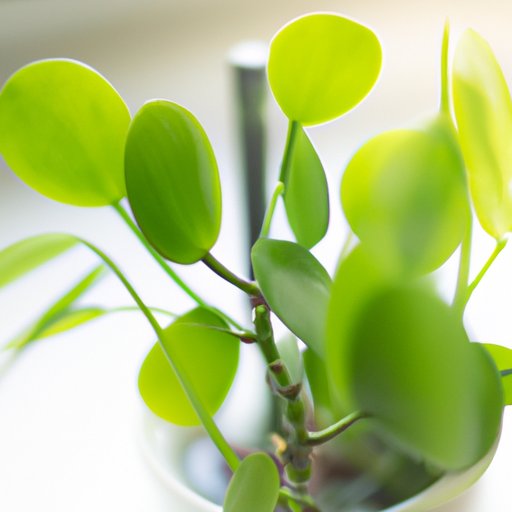
Introduction
Money plants or Pachira Aquatica have long been associated with good luck and fortune. They are common in households and offices around the world and are believed to bring wealth, prosperity, and happiness. But, is there any truth to this belief, or is it just a myth? This article delves into the historical, cultural, scientific, and personal perspectives on money plants’ luckiness, and provides insights into their symbolism, Feng Shui practices, and care tips. Whether you’re a believer or a skeptic, this article provides everything you need to know about money plants and their connection to luck.
Historical and Cultural Beliefs
Money plants are native to Central and South America and were introduced to Asian countries, including China, Taiwan, and Japan, in the 1980s. Since then, they have become a staple in homes and offices worldwide. People believe that the plant’s intertwining trunks and distinct five-lobed leaves represent the five elements that bring good luck- wood, water, earth, metal, and fire.
In traditional Chinese and Eastern cultures, money plants are believed to invite wealth and prosperity, and their leaves’ shape resembles coins. Feng Shui practitioners place them in the southeast corner of a room or house to usher in wealth and financial stability. In western cultures, they are said to attract good luck and fortune, and their sheer presence is believed to ward off negativity.
Scientific Perspective
From a scientific standpoint, there is no concrete evidence to suggest that money plants have any direct influence on good luck. However, they do offer many benefits to physical and mental health, which can indirectly contribute to a more positive outlook. Studies show that indoor plants, including money plants, improve air quality by removing toxins, reducing stress levels and anxiety, increasing productivity, and promoting overall well-being. When people feel good physically and emotionally, they may attract good luck as a result.
Personal Experience and Anecdotal Evidence
Countless anecdotal stories attest to the positive and luck-bringing experiences of people who keep money plants in their homes and workplaces. For instance, some claim that receiving the plant as a gift has brought financial prosperity and increased income, while others say it helped find new job opportunities or improved their business sales. These stories aren’t unique to one culture or region, but they appear to be universal, making the belief in money plants’ luckiness surprisingly popular worldwide.
Symbolism and Meanings
Money plants’ symbolism and meanings vary from culture to culture. In Chinese culture, a money plant with five leaves represents the five elements and is said to attract wealth and prosperity. Plants with multiple leaves can signify multiplying opportunities. In Hinduism, the association between the plant and the goddess Laxmi, who is considered the goddess of wealth and fortune, is strong. The plant is also associated with money, abundance, and growth. In contrast, some western cultures associate the plant with materialism and greed, which contradicts Eastern cultures’ association with prosperity and abundance.
Feng Shui Practices
Feng Shui is an ancient Chinese practice that aims to balance the energy flow or chi in a space to achieve harmony and well-being. Feng Shui practitioners use money plants to balance family finances, attract wealth, and promote abundance and good fortune. The practice involves placing the plant in the southeast corner of the house or the corner diagonally opposite the main entrance, where wealth and prosperity chi strongly exist. The practice is widely popular, and many people report that they have seen an increase in their financial wealth or business success after the implementation of Feng Shui principles.
Tips for Success
Caring for a money plant is relatively easy and requires minimal upkeep. The plant prefers a brightly lit but indirect location with mildly moist soil. It is essential to keep the soil moderately dry to avoid root rot. Moreover, the plant thrives best in a pot with drainage holes, and regular pruning promotes branching and growth. You can also twist or braid the stems, creating unique shapes and adding to the plant’s aesthetic appeal.
The Role of Faith
Finally, the role of an individual’s belief system and faith in the association between money plants and good luck may be significant. So, if you believe in the power of money plants, you may be inviting positive energy into your life. However, if you’re skeptical, then the power of the plant won’t have any impact, and the plant will be nothing more than decoration.
Conclusion
So, are money plants lucky? While there is no scientific proof that they bring good luck, many people worldwide believe that they do. The plant’s symbolism, Feng Shui practices, and countless anecdotal stories, suggest a universal belief in its luck-bringing powers. Moreover, the plant’s air-purifying properties, stress reduction, and beauty add significant value to its presence in our homes and offices. Whether it’s a myth or an actual phenomenon, a money plant’s presence adds positivity and aesthetics to our lives. Therefore, it’s safe to say that investing in a money plant won’t hurt, but may bring unexpected fortune and happiness into your life.





